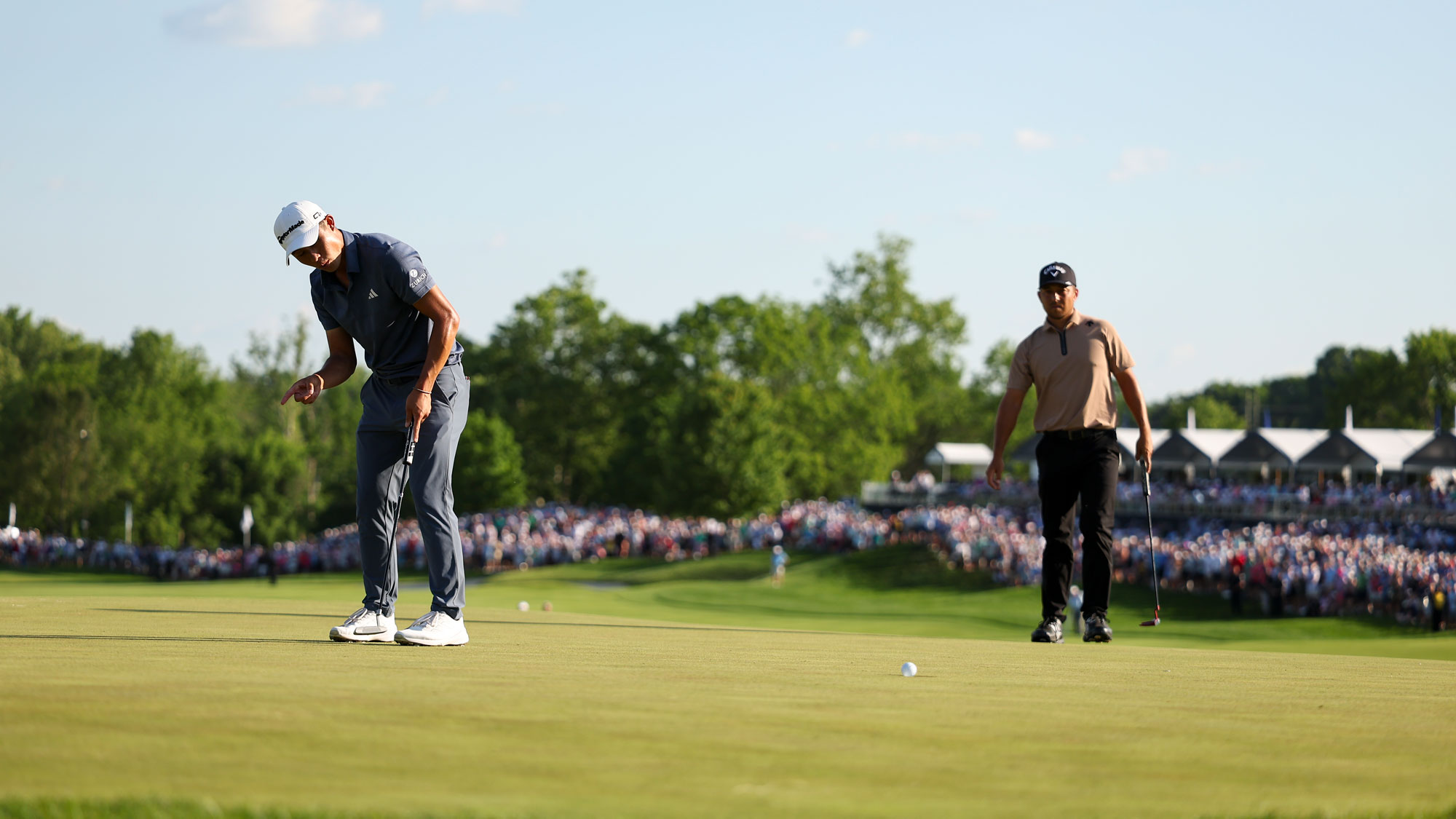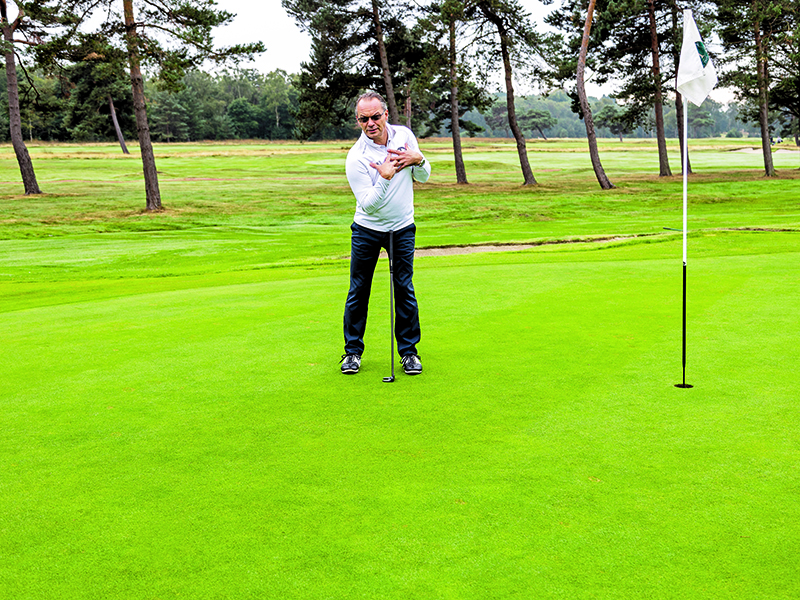Hole More Putts Under Pressure With 3 Expert Putting Tips
When the pressure ramps up on the greens, the last thing you want is a cold putter. These three expert tips will help to inject some fire into the flat stick...

Baz Plummer

Missing crucial putts when under pressure is one of the worst feelings in golf, but there are many reasons why this might happen. The added significance could be causing you to subconsciously alter your putting grip, fail to match up line and speed or totally mis-read your putts, but more than likely it will all come down to your posture.
In this article, Golf Monthly Top 50 Coach Andy Gorman shares three expert tips to perfect your posture with the putter when under pressure...
1. Create A Solid Left-Side Column
Despite reading the best putting tips, a lot of amateur golfers still misunderstand what should be happening in the putting stroke. The movement of the stroke into the ball should be upward and not downward. A poor posture with a lower left shoulder encourages a downward hit and a poor strike.
When you’re under pressure, the posture can easily go wrong. The left shoulder, arm, hip, knee and ankle are all in a solid line here and this is a good visual to keep in your mind. You are creating a solid left-side column with the weight loaded over the left hip, leg and ankle, but you are in a high rather than low position. This encourages good posture over the ball.

Creating a solid left-side column will help your putting posture and your success rate
2. The Role Of The Left Shoulder
The role of the left shoulder is key in putting. The forward swing is governed by an upward movement of the left shoulder, before it then starts to rotate around the spine.
If the chest is low, the left shoulder gets stuck and the hands take over and start flipping the putter. By getting a taller set-up, you can activate the spine; by bunching over it, you are deactivating the spine’s rotational capabilities.

The upward movement in the shoulder governs the forward swing with the putter
3. The Putting Stroke
The hands and the handle keep moving forward because the chest keeps moving through the stroke, and the body/head stay in the same position. In effect, the right shoulder turns the chest in the backswing and that moves the club 10-12 inches, which is sufficient for a 12-foot putt.
Subscribe to the Golf Monthly newsletter to stay up to date with all the latest tour news, equipment news, reviews, head-to-heads and buyer’s guides from our team of experienced experts.
The left shoulder has gone down to the right and forward as part of that rotation and needs to get up and out of the way on the through-swing before starting to rotate just after the strike.

Keep moving during the stroke and clear the left shoulder on the through-swing
How Do I Practice Putting Under Pressure?
There are plenty of brilliant putting drills out there, but some of the very best encourage you to practice under pressure. Setting yourself a target on the practice green is a great way to add some accountability to your putting, and acts as a great barometer for success.
Try playing 'nine holes' on the practice green, and give yourself a target at the start to go round in 'par'. Repeat this on your next few visits and keep track of your best and worst rounds. You can then adapt your target and add a little more challenge where required.
How Can I Build Confidence On The Golf Course?
It can be hard to manage your emotions on the golf course, especially when you are required to make a challenging putt under pressure. Some context and a little positivity go along way, however, so don't be too hard on yourself.
Try to learn something from your good putts, and your bad ones, and you will certainly be better for it in the long run.

Location: Wishaw GC
Andy has been coaching for over 30 years and he now specialises in the short game and putting. He has worked with a collection of both male and female tour pros and he helped take Charley Hull from a ‘conditional’ LET status to five second places in her first five starts in her rookie season before then playing in the Solheim Cup. Andy helped improve her putting stats from 34.3 to 30.49 putts per round.
Teaching philosophy:
To release a player’s instinctive capability by understanding their posture, balance and brain work together to achieve a repeatable reliable method.
Greatest teacher:
Seve Ballesteros, in the early 80s, he allowed me to watch him closely whilst he was practising his short game during tournaments at The Belfry. Seve would show me what he was doing and, although communication wasn’t great, he made sure I understood what to watch out for. Timeless advice which, I didn’t appreciate it at the time, but I certainly do now.
Most common impact fault:
Closed clubface on putts causing a pulled putt result. Poor posture is invariably the cause from an ill-fitting putter. Fitting the putter to provide optimum posture and essentially allow the body to facilitate the required movement so the wrists don’t break down pre-impact.
- Baz PlummerStaff Writer